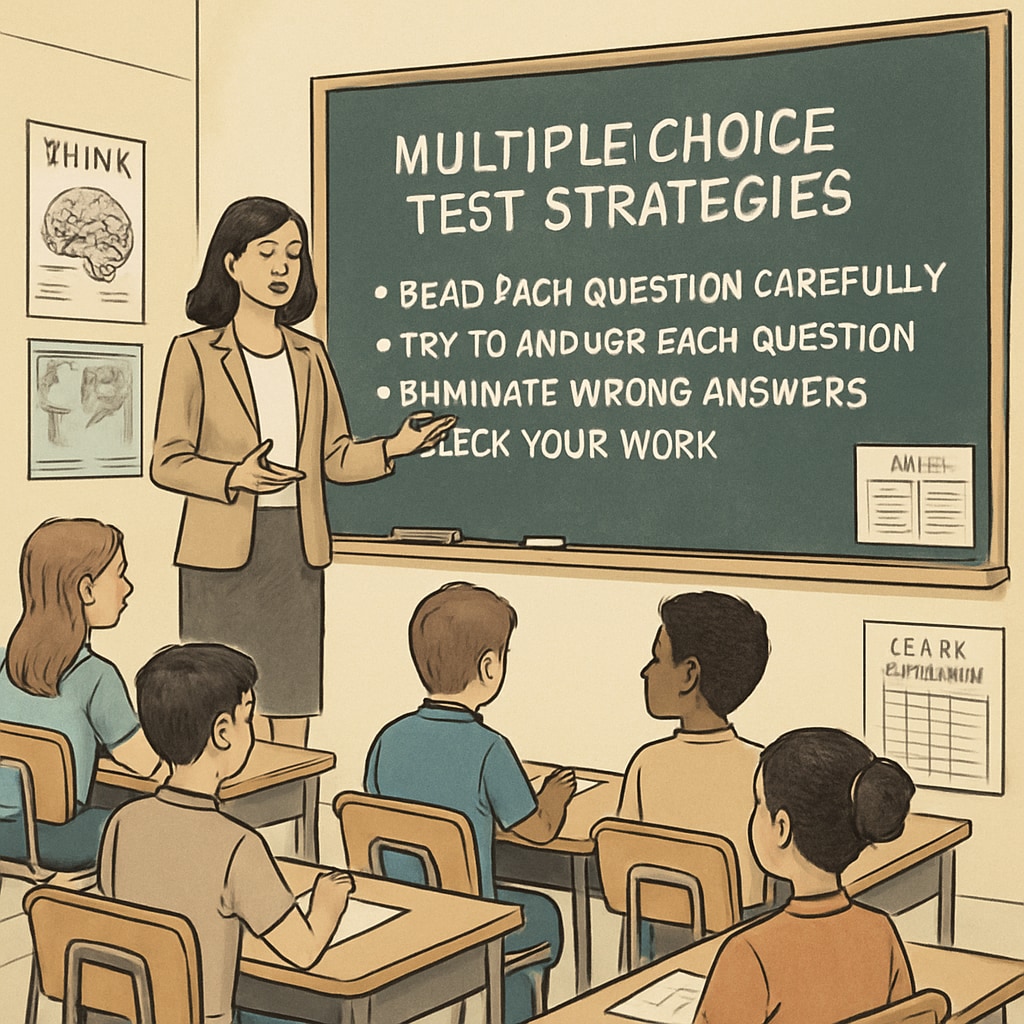Math anxiety, multi-choice exams, and test stress—these challenges are all too familiar for students, particularly during high-pressure scenarios. For many, the multi-choice section of math tests can feel overwhelming, triggering self-doubt and fear of failure. In this article, we’ll explore the psychology behind math anxiety, share the story of a 17-year-old student’s personal journey, and provide actionable strategies to help students overcome these obstacles.
Understanding Math Anxiety and Exam Stress
Math anxiety is a psychological phenomenon where individuals experience intense fear or worry related to math tasks. This often manifests during exams, particularly in multi-choice sections where uncertainty and the pressure to select the “correct” answers can amplify stress. According to Britannica, anxiety can disrupt cognitive processes, impairing focus and logical thinking. As a result, even well-prepared students can struggle to demonstrate their true capabilities under test conditions.
One notable case is that of Emily, a 17-year-old transfer student who faced severe math anxiety after joining a new school. Despite being academically strong in other subjects, she often froze during multi-choice math exams, doubting her answers and second-guessing herself. Her experience highlights the emotional and cognitive barriers that many students encounter.

Why Multi-Choice Questions Can Be Especially Stressful
Multi-choice math questions present unique challenges. Unlike open-ended problems, these questions require students to select the best answer from multiple options, which can provoke the fear of choosing incorrectly. Additionally, the presence of distractors—plausible but incorrect answers—can increase confusion. This type of problem-solving demands both precision and confidence, traits that anxiety often undermines.
For students like Emily, the inability to trust her instincts or rationalize her choices led to heightened exam stress. Research from Wikipedia indicates that individuals with math anxiety often perceive themselves as less competent, regardless of their actual skill level, further perpetuating self-doubt.

Practical Strategies to Overcome Math Anxiety
While math anxiety can feel insurmountable, there are several effective methods to manage and reduce its impact:
- Cognitive Restructuring: Replace negative thoughts with positive affirmations. For instance, instead of thinking, “I’ll fail this exam,” students can reframe it as, “I’ve prepared well and will do my best.”
- Practice with Simulated Exams: Regularly completing multi-choice mock tests helps students familiarize themselves with the format and build confidence.
- Time Management Techniques: Teach students to allocate time wisely during exams, ensuring they don’t spend excessive periods on a single question.
- Elimination Method: Encourage students to systematically eliminate clearly incorrect options, narrowing down choices and reducing guesswork.
- Mindfulness and Relaxation: Breathing exercises or brief meditation before exams can help lower stress levels and improve focus.
By implementing these strategies, students like Emily can gradually rebuild their confidence and approach math exams with a calmer mindset.
Rebuilding Confidence and Embracing Math Challenges
Overcoming math anxiety is not an overnight process; it requires consistent effort and patience. Teachers, parents, and peers play a vital role in supporting students through this journey. Encouraging a growth mindset—where mistakes are viewed as opportunities for learning—can help students feel more resilient.
Emily’s story offers a hopeful example. After months of practicing mindfulness techniques and working on cognitive restructuring, she successfully completed her math exams with improved performance. More importantly, she reported feeling less stressed and more capable of tackling future challenges.
In conclusion, math anxiety and multi-choice exam stress are common hurdles, but with the right strategies, students can overcome them. By fostering confidence, providing targeted support, and addressing the psychological roots of anxiety, educators and parents can empower students to conquer their fears. The journey from fear to mastery is achievable—and it begins with the first step.
Readability guidance: This article uses short paragraphs, bullet-point lists for clarity, and transition words to maintain flow. Students and educators alike can benefit from its actionable advice and relatable examples.


